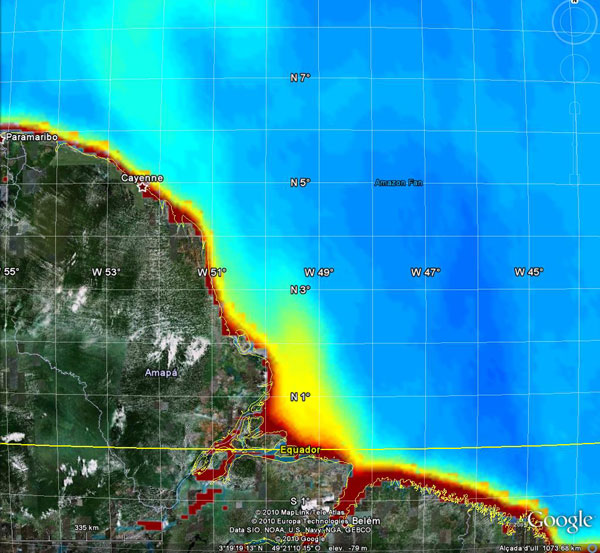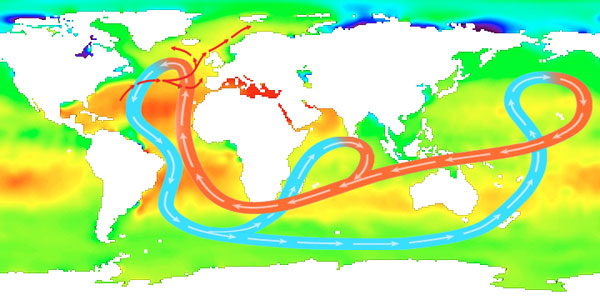Amazon River Plume Spied by Satellite


The plume of freshwater that pours from the Amazon River into the Atlantic Ocean and delivers 15 percent of all freshwater deposited in the world's oceans is currently being tracked by satellites as it migrates with the changing seasons.
The Soil Moisture and Ocean Salinity (SMOS) mission has been creating global maps of soil moisture and ocean salinity (dissolved salt content) for the science community during the past few months. Using their satellites, SMOS has been observing the movement of the Amazon River plume as changing ocean currents, caused by the seasons, alter its path.
"Observations between mid-July and mid-August clearly show how the North Brazilian Current transports freshwater from the Amazon River as the current flows across the mouth of the river," said Nicolas Reul of Ifremer (the French Research Institute for Exploitation of the Sea).
During the first half of the year the Amazon River water generally disperses over a broad area, toward the Caribbean Sea, but in the second half of the year the plume flows around the North Brazil Current and is carried eastward.
"Over the last weeks we have been able to track how the Amazon freshwater plume curves back on itself at this time of year as large North Brazilian Current eddies form above the river mouth," Reul said.
This movement results in distinct changes in salinity.
Along with temperature, variations in ocean salinity drive global three-dimensional ocean-circulation patterns. This conveyor-like ocean circulation is an important component of Earth's heat engine and crucial in regulating weather and climate.
Get the world’s most fascinating discoveries delivered straight to your inbox.




